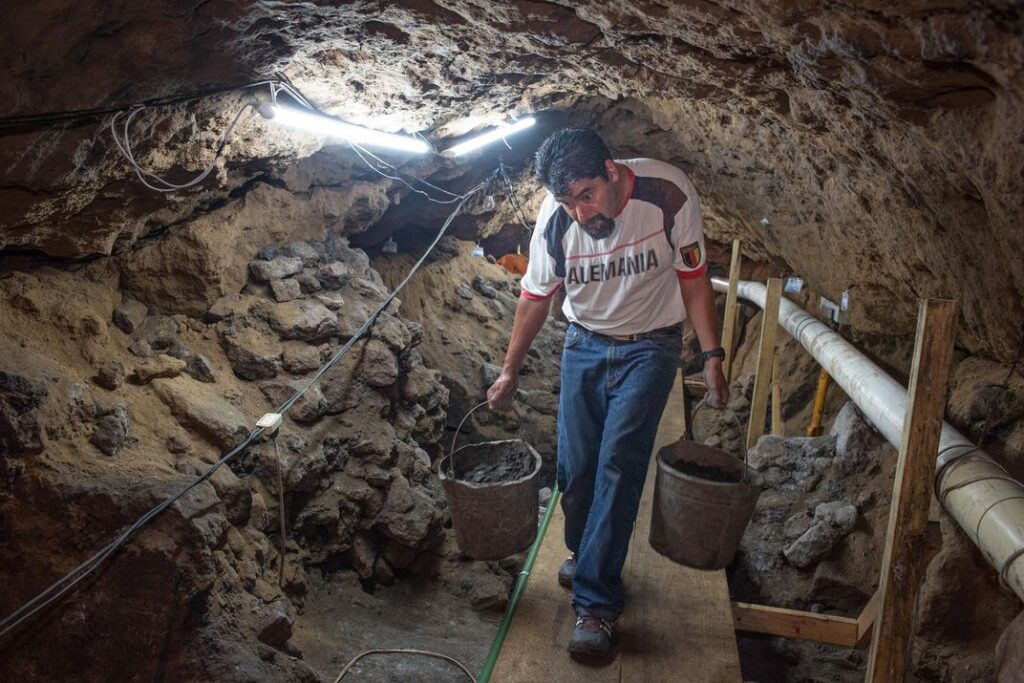Geologists Map Secret Tunnel And Chamber Found Beneath Aztec Pyramid
“Teotihuacan, translated from the Aztec language as “birthplace of the gods,” or “a place where gods were born,” was a very important religious and cultural center during the Aztec empire.
Less than a decade ago, archaeologists uncovered an almost 60-foot Vertical shaft under the Avenue of the Dead.
Excavation of the tunnels beneath the Avenue was not possible, but in 2017 a team of geologists used electrical resistivity mapping to map the underground beneath the Avenue of the Dead.

This archaeological site in modern-day Mexico is famous for its broad central “Avenue of the Dead,” surrounded by a dozen pyramids and platforms. The 150 feet high Pyramid of the Moon was built in successive phases and construction completed between 200 and 250 CE. The nearby Pyramid of the Sun is even higher at 216 feet.
Excavation revealed a system of tunnels and chambers. Human remains and diverse objects made from green obsidian, a type of volcanic rock used in religious rituals, were recovered.

The extent of this tunnel-system remains uncertain to this day. Archaeologists suspected that the tunnels follow the pattern of the streets and pyramids on the surface.
As excavation of the complete site was not possible, in 2017 a team of geologists used electrical resistivity imaging to map the underground beneath the Avenue of the Dead.
Electrical resistivity imaging is a geophysical technique used also on other archaeological sites to map the composition of the underground, revealing large subterranean cavities or the presence of groundwater.
The researchers discovered a tunnel at a depth of 26 feet, that starting from the center of the avenue runs to 49 feet in diameter large cavity hidden beneath the Pyramid of the Moon.

The age and the use of this network of tunnels and chambers remain uncertain. The walls of the excavated tunnels were covered with pyrite powder.
Visitors would see the grains of this yellow mineral glitter in the light of torches, an effect resembling the stars of the celestial sphere. It was suggested that the tunnel-system acted as a symbolic gateway, connecting the sky with the underworld, and played an important role in religious rites.
The origin of the tunnel-system – and the city – are still being studied. Centuries later, the Aztecs built some towns on the site of the ancient city, but it’s not yet clear if they used the preexisting tunnel-system.
Around 300 CE, the tunnels appear to have been sealed off and nobody knows why or what the chamber may hide.





